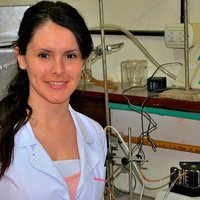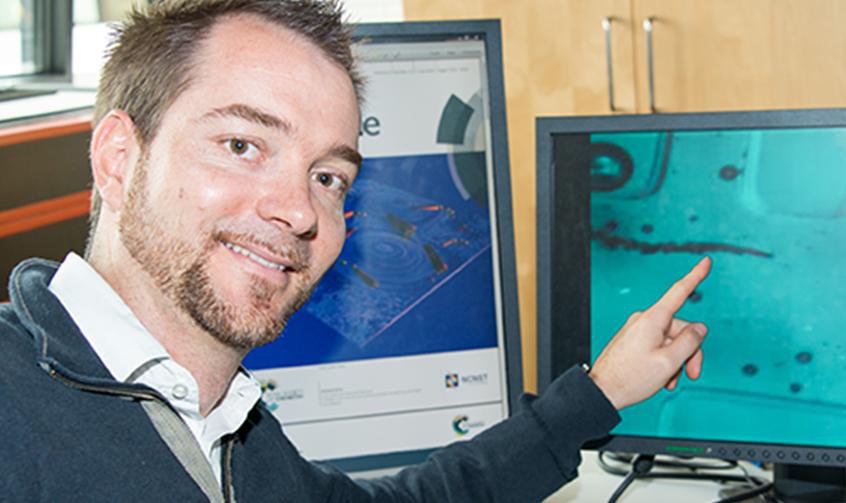"It is any doctor's dream to have a microscopic assistant capable of moving freely inside the human body to either provide localised measurements or carry drugs or other biological molecules right where they are most needed. The nanotubes developed by Samuel Sánchez, young researcher at the Max Planck Institute for Intelligent Systems, may well be this kind of precious assistant in the future. Sánchez obtained his PhD in Sensors and Biosensors from Universitat Autonoma de Barcelona (Spain) in 2008, and has continued his quest for the best ''biological taxi drivers'' ever since, by finding new ways to incorporate antibodies, enzymes and hormones into polymers, together with nanotubes and nanoparticles. This branch of science are referred to as nanobiorobotics, and is based on tiny membranes, which are covered with specific atoms, whose interaction with the environment forces the membrane to “roll” on itself and form a tube.
Sanchez combines live cells with tubes whose size is between 20 and 100 microns, (“we are trying to build nanometric tubes through new fabrication methods”), for example, when he devised microrobots incapsulating spermatozoa, which can therefore be “driven” through a magnet from outside the body. By doing so, the small robot can more effectively reach the place where to release spermatozoa. Not bad to fight male infertility.
However, using a magnetic field is not the only way to propel these tiny devices: other experiments showed promising results by using hydrogen peroxide and even ultraviolet light, although such “fuels” would not be used for medical purpose, as they are toxic to the human body. For this reason, Sanchez is also researching on other sources of energy, such as the physiological or temperature differences in the fluid used for transport (which includes blood). A lot of energy is to be found in our body and vessels, and Sanchez is expert in how to use it to his needs, that is propelling his robots to move as he wishes, for example to be able to enter cancer cells and, one day, allow specific molecules to be transported right there. By adding specific atoms or other molecules onto the external or internal walls of the microtubes, their movement characteristics can be modified and tuned for a specific purpose. A chemist with an engineer's mindset, Sanchez is always “looking for a better alternative” with a pragmatic, experimental approach. “We are trying to use glucose as a propeller in the human body,” he says.
In fact, applications of nanotubular robots are extremely varied, for example, in environmental sciences: Sanchez devised another type of microrobot, covered with iron (externally) and platinum (internally). By taking advantage of the generation and release of oxygen bubbles, the microrobot moves in water using hydrogen peroxide, while the iron ions produce the degradation of organic pollutants present in the water. Sanchez's microrobots clean polluted water 12 times faster than traditional methods, pretty much like those cleaning robots, which wander around our house cleaning it at the same time. An army of loyal agents at our service."




